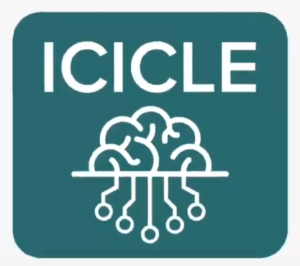The NSF has announced a new institute, funded to the tune of tens of millions of dollars and supported by a series of major supercomputer centers: ICICLE. “ICICLE,” which is shorthand for the AI Institute for Intelligent Cyberinfrastructure with Computational Learning in the Environment, aims to help “transform today’s AI landscape from a narrow set of privileged disciplines to one where democratized AI empowers domains broadly through integrated plug-and-play AI.”
 Removing the barriers to AI in research
Removing the barriers to AI in research
ICICLE intends to offer this plug-and-play AI as a service that “will seamlessly adapt to the changing data and infrastructure needs of the end user” using “natural language conversational and visualization-powered user interfaces”. The system, it says, will be built and proved around three application domains: smart foodsheds, digital agriculture and animal ecology.
Beyond these issue areas, ICICLE will pursue five core R&D value propositions:
- Establishing a national cyberinfrastructure for AI
- Developing rubrics for training the next generation of researchers who can translate from use cases to AI-powered cyberinfrastructure
- Integrating emerging AI technologies with advanced cyberinfrastructure capabilities
- Designing a roadmap for future AI-driven science and cyberinfrastructure
- Building a nexus of collaboration among AI, cyberinfrastructure and domain sciences
“Artificial intelligence is becoming very important,” said Dhabaleswar K. “DK” Panda, principal investigator for ICICLE at the Ohio State University (OSU). “A lot of people are using it, but it is still limited to advanced technical people. How do we take it to the masses? That’s where we want to take AI – a plug-and-play version which will be democratized so that anybody can use it over the years.”
To pursue these ambitious objectives, the institute will receive $20 million from the NSF over the course of the next five years as part of an overall $220 million investment that established a whopping total of eleven new National Artificial Intelligence Institutes.
A wide-ranging partnership
OSU is leading the charge (along with its constituent Ohio Supercomputer Center, or OSC), but there are a full 14 partners on ICICLE. In addition to OSU and the OSC, ICICLE will have contributions from: the San Diego Supercomputer Center (SDSC) and the Texas Advanced Computing Center (TACC); nine universities, including Case Western Reserve University, Iowa State University, Rensselaer Polytechnic Institute, University of California Davis, University of California San Diego, University of Delaware, Indiana University, University of Utah and University of Wisconsin; and the International Center for Food Ontology Operability Data and Semantics (IC-FOODS).
The three supercomputer centers – OSC, SDSC and TACC – will all supply ICICLE with HPC capabilities, large-scale data storage and AI technologies. “SDSC and UC San Diego researchers are involved in various research topics including education and workforce development, knowledge graphs, adaptive AI, high-performance model training and more,” explained Amit Majumdar, principal investigator of the sub-award to SDSC and director of Data-Enabled Scientific Computing at the center. TACC, meanwhile, highlighted its roles in providing edge intelligence, performance modeling and scalable, high-performance data management for the institute.
Education and outreach are also core tenets of ICICLE’s raison d’être, with the institute aiming to “significantly increase the number and diversity of individuals with AI and cyberinfrastructure skills to meet tomorrow’s workforce needs in a variety of domains”. ICICLE will pursue this objective through training in areas like human and AI bias; mentoring “up and down [the] organization”; a fellowship program; community-based participatory research; partnerships with K-12 educators; summer camps for young women; and more. “ICICLE will grow new generations of workforce and incubate innovative companies, with sustained diversity and inclusion at all levels,” Panda said.

“OSC is especially proud to support a project that so squarely centers diversity and inclusion in its sights,” added Karen Tomko, OSC’s director of research software applications. “Ensuring adequate representation in emerging technologies is critically important to equitably distributing the benefits of these advancements.”
And this commitment to inclusion extends to the AI of it all, as well.
“ICICLE will enable plug and play AI, hiding a lot of the technical obstacles from researchers, and making it easier to accomplish their science,” said Zhao Zhang, a computer scientist in TACC’s Scalable Computational Intelligence group. Joe Stubbs, manager of TACC’s Cloud and Interactive Computing group, added: “The ICICLE platform will be open source – one of our primary goals is to create unifying standards that can break down barriers to accessing and successfully using AI.”
… and the rest
The other ten National Artificial Intelligence Institutes include: the AI Institute for Collaborative Assistance and Responsive Interaction for Networked Groups (AI-CARING), led by Georgia Tech; the AI Institute for Advances in Optimization, also led by Georgia Tech; the AI Institute for Learning-Enabled Optimization at Scale (also known as TILOS), led by the University of California San Diego; the AI Institute for Future Edge Networks and Distributed Intelligence (also known as AI-EDGE), led by OSU; the AI Institute for Edge Computing Leveraging Next-Generation Networks (also known as Athena), led by Duke University; the AI Institute for Dynamic Systems, led by University of Washington; the AI Institute for Engaged Learning, led by North Carolina State University; the AI Institute for Adult Learning and Online Education (ALOE), led by the Georgia Research Alliance; the Institute for Agricultural AI for Transforming Workforce and Decision Support (AgAID), led by Washington State University; and the AI Institute for Resilience Agriculture (AIIRA), led by Iowa State University.
Along with the AI Institute for Engaged Learning, ICICLE is one of two AI institutes fully funded by the NSF. Two are funded by the U.S. Department of Agriculture’s National Institute for Food and Agriculture; three are partially funded by the U.S. Department of Homeland Security; one is partially funded by Accenture; one is partially funded by Amazon and Google; and two are partially funded by Intel.
To learn more about the AI institutes, click here.






























































